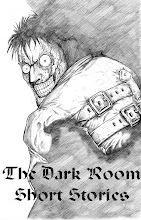Amalgamating two characters is something I often find myself either suggesting as feedback on other peoples' scripts or doing in rewrites of my own. One of the first major developments in the Ten Dead Men script was the amalgamation of two of the main characters who essentially performed the same function. It's something that is often quite easy to spot from an objective point of view and can be an effective way of simplifying an over-complicated script.
Sometimes it's not that simple, especially when you get into it in the later stages of a script as I'm finding now. Dark Future, the zombie project I've been developing with a director for a couple of years now, is currently at three drafts and I'm in the process of writing the fourth with the main change being the amalgamation of two characters - as I don't really like getting into specifics we'll call them Jim and Bob for now. At first I thought this was a great idea - Jim was always a bit of a problematic character to begin with and Bob had been criticised for being far too similar to a third character...let's call him Cecil. It also seemed like something that would be fairly straight-forward to implement.
It's not.
Both characters are bad guys, but Jim starts out as a potential hero who is slowly revealed to be a bit wrong, while Bob is a vile, malicious character from the moment we meet him. So it's not a case of just changing the name of one to match the other and working round the bits where they interact. Except I was daft enough to think this might help so the first thing I did was change the names round. So I now have two characters in the script called Bob and am working from memory as to which was which. This can be annoying but I'm too lazy to change it back.
The other problem is there is a lot of exposition in the film. I'd forgotten that in the second or third draft I'd changed Jim's occupation into one that would give him an excuse to deliver a lot of that exposition. Fine, give Bob that occupation instead, but the problem with that is that Bob's character is tied closely into Cecil's story arc, and without him Cecil has no one to talk to and becomes a lot less interesting. They may have been very similar but the two of them were necessary so it's still easier to merge Jim into Bob rather than the other way round. And the Bob that is partnered with Cecil can't have Jim's occupation - it just wouldn't work.
There are two conclusions I've come to as a result.
1) Time-consuming as it is, there are advantages to doing a full, page-one rewrite rather than just a pass at the script. In this case it's a small enough change that it doesn't really warrant a page one rewrite and I don't really have time to do that anyway, but it is also the kind of change that's difficult to keep track of when doing it like this. And this leads me onto point two.
2) It's easy for a reader (and I'm really talking about the casual reader rather than the professional script reader - as a somewhat casual reader myself I often recommend changes to people's scripts without any idea of how I would go about implementing them) to say 'I know what the problem is here - these characters are essentially the same!' Working that into a script is much harder. A lot of things in film making, at all levels of development and production, are about hiding the process - making the behind the scenes stuff invisible so your audience isn't aware of it. We all know there is a three act structure and with plot points and character arcs and so on, but we don't want to be reminded of that when we're watching a film. Just like we don't want to be reminded of the crew and the lights and the cameras.
So the machinery beneath the surface of the script shouldn't really be visible to the casual reader. But when you take out one of the elements on that surface there are all kinds of repercussions below - it's like taking a gear out of a complex machine and hoping it still works the same way. So the page one rewrite is when you disassemble the whole thing and put it back together again making sure everything works the way it should. Or you do it the way I'm doing it - running tests, finding the parts that used to work and now don't anymore and then changing them too, only to find that now some other part somewhere else has broken down as a result.
It's hard work, but that's also what I enjoy about it - it feels like hard work. Although it's also why I've been putting off doing it on this script for so long.
Subscribe to:
Post Comments (Atom)


2 comments:
That sounds like murder, I'd hate to kill off or smash together a character so far into a script--best of luck.
Cheers, I've a feeling I'll need it!
Post a Comment